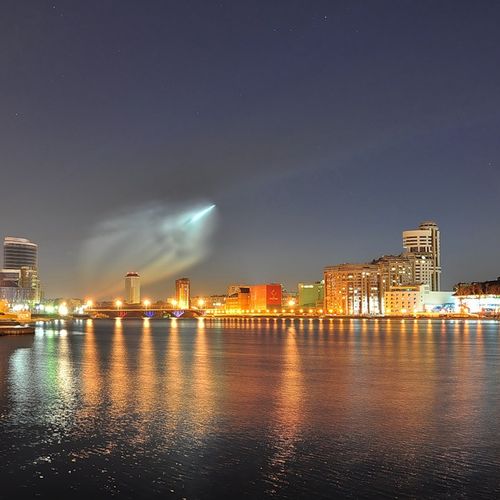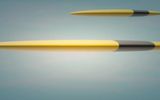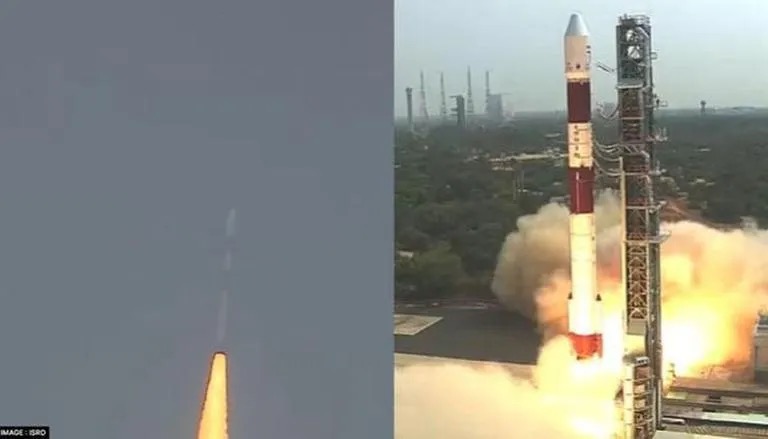| ID | #1683733883 |
| Añadido | Mié, 10/05/2023 |
| Autor | July N. |
| Fuentes | |
| Fenómenos | |
| Estado | Investigación
|
Datos iniciales
El 23 de abril de 2007, un piloto de una aerolínea británica llamado capitán ray Boyer fue testigo de una vista notable en el cielo cerca de las islas del canal.
Estaba en un vuelo regular de pasajeros de Southampton a Alderney cuando notó una luz amarilla brillante con un área verde a unas 10 millas al oeste de Alderney. Estima que el objeto se encuentra a unos 2.000 pies sobre el nivel del mar y está inmóvil.
Al acercarse al objeto, se dio cuenta de que era mucho más grande de lo que pensaba al principio. Lo describió como "un objeto amarillo muy afilado y delgado" con una base plana y una cúpula en la parte superior. Dijo que tenía aproximadamente una milla de ancho y media milla de largo. También notó un segundo objeto idéntico más al oeste.
Llegó a la conclusión de que no era un reflejo, sino una emisión de luz. Con binoculares, podía ver una cierta forma. El objeto era largo y delgado desde su punto de vista y puntiagudo en cada extremo. La relación entre las dimensiones horizontales y verticales de su cuerpo era de aproximadamente 15: 1.
Era de color amarillo brillante con una banda de color gris oscuro que cubría un tercio a la derecha, como una banda alrededor de un cigarro. Con sus binoculares de aumento de 10x, pudo ver que no tenía nada que ver con un avión convencional. Se quitó las gafas para eliminar la posibilidad de reflexión desde atrás.
Su reacción fue ponerse en contacto con el ATC de Jersey para confirmar o descartar la posibilidad de tráfico en su dirección. Paul Kelly, de ATC Jersey, negó la presencia de movimiento en la ubicación especificada, pero pudo captar una débil señal de radar inverso primario, es decir, una señal sin una señal de respuesta de transpondedor adicional.
Sin embargo, sus instrumentos estaban configurados para detectar solo objetos en movimiento.
El pasajero detrás del capitán confirmó lo que había visto y señaló una segunda nave similar, inmediatamente después de la primera: "al acercarse al objeto, apareció una segunda forma idéntica detrás de la primera. Ambos objetos tenían la forma de un disco aplanado con un área oscura a la derecha. Eran de color amarillo brillante, con luz proveniente del interior y, según mis estimaciones, tenían hasta una milla de ancho".
El Servicio de despacho de Jersey ahora pudo obtener la confirmación del piloto de Blue Island Air, [8]: 336 personas que estaban a 25 millas (40 km) al sur también tuvieron contacto Visual con un objeto.
Al observar los objetos, Boyer se alejó mucho más allá del punto de descenso. En un acercamiento tan cercano, los dos objetos cambiaron de posición y parecían alinearse, uno directamente sobre el otro.
Ahora se hizo evidente la característica transitoria del objeto más cercano. En el límite entre su brillante área amarilla y su franja vertical gris oscuro, Boyer creía ver una superficie pulsante donde los azules brillantes, verdes y otros tonos parpadeaban hacia arriba y hacia abajo aproximadamente una vez por segundo.
Preocupado por la seguridad de sus pasajeros, comenzó el descenso a la pista y una capa de neblina ocultó su vista final de los objetos. Sin embargo, en ningún momento durante el vuelo hubo interferencia con los sistemas, instrumentos o comunicaciones de Radio de la aeronave.
El capitán Boyer dice:
"Era un objeto grande en el cielo, un objeto muy, muy grande. No quería estar demasiado cerca de él, y fue en este momento que tuvimos que Bajar a la tierra. Descendimos a través de una capa de niebla de 2, 000 pies (610 m) de altura y la perdimos de vista". ... Sobre Guernsey, dijo: "No fue para ocultar, simplemente estaban allí. No estaba muy feliz. Estaba muy emocionado de Bajar a la tierra... y tomar una taza de té".
"Si fue diseñado por un ingeniero, esa persona tenía que estrechar la mano porque era un equipo fantástico, si ese era el caso. Realmente no puedo decir más que decir lo que he estado diciendo todo este tiempo, que esta cosa no es de aquí". - Ray Boyer
Boyer no fue el único que vio objetos misteriosos. Sus pasajeros y el copiloto también confirmaron su observación, así como otro piloto que volaba cerca de Sark, a 25 millas al sur de Alderney.
El copiloto, el capitán Patterson, dijo haber visto "algo así como una plataforma petrolera" en el mismo lugar y a la misma altura que la primera instalación de Boyer.
Los objetos también aparecieron en el radar, dijo Boyer. Dijo que se puso en contacto con el Servicio de control de tráfico aéreo en Jersey y Guernsey, y confirmaron que sus pantallas tenían dos objetivos desconocidos que coincidían en ubicación y Tamaño con los objetos que había visto.
Sin embargo, una investigación más reciente realizada por David Clark, investigador de Ovnis y profesor en la Universidad de Sheffield-Hallam, encontró que las huellas de radar podrían haber sido causadas por interferencias de transbordadores de carga o pasajeros en el área.
Boyer estaba convencido de que lo que había visto no era un fenómeno natural o una estructura hecha por el hombre. Dijo que nunca había visto algo así en sus 18 años de experiencia en vuelo.
Dijo sentirse "bastante extraño" y "bastante asustado" por el encuentro. También dijo que estaba preocupado por la seguridad de sus pasajeros y de sí mismo, ya que no sabía si los objetos eran hostiles o no.
Boyer no estuvo de acuerdo con el grupo de Clark sobre la supuesta conexión entre las pistas de radar y los transbordadores, y sugirió que los dos robustos barcos a bordo que no eran y no podían ser producidos en la Tierra operaban ese día al unísono, como lo demuestra la evidencia de que su salida fue coordinada en el tiempo y el espacio.
Más tarde, participó en una reunión del Club nacional de Prensa sobre Ovnis en Washington, DC, donde pidió una mayor transparencia e investigación sobre los avistamientos de Ovnis por parte de pilotos y militares.
Dijo que cree que los objetos que vio son de origen extraterrestre y que trabajan al unísono para algún propósito desconocido.
Noticias originales
On April 23, 2007, a British airline pilot named Captain Ray Bowyer witnessed a remarkable sight in the sky near the Channel Islands.
He was flying a routine passenger flight from Southampton to Alderney, when he spotted a bright yellow light with a green area, about 10 miles west of Alderney. He estimated the object to be about 2,000 feet above sea level and stationary.
As he approached the object, he realized it was much larger than he had initially thought. He described it as a “very sharp, thin yellow object” with a flat base and a dome on top. He said it was about a mile wide and half a mile long. He also noticed a second, identical object further to the west.
He concluded that it was not a reflection but an emission of light. With his binoculars, he could make out a definite shape. The object was long and thin from his viewpoint, and was pointed at each end. The horizontal to vertical dimensions of its body were in a ratio of about 15:1.
It was brilliant yellow, with a dark grey band enveloping it one third from the right, like a band around a cigar. With his 10× magnification binoculars, he could make out that it bore no relation to a normal aeroplane. He took his glasses off to exclude the possibility of a reflection from behind.
Illustration of the objects based on notes made by Captain Boywer during the flight.
His reaction was to make contact with Jersey ATC to confirm or exclude the possibility of traffic heading his way. Paul Kelly at Jersey ATC denied the presence of traffic in the said position, but could pick up a faint primary return radar signal, i.e. a signal without the additional transponder return.
His instruments were however set to detect only moving objects.
A passenger behind the captain confirmed what he was seeing, and pointed out a second similar craft, immediately behind the first: “Upon nearing the object, a second identical shape appeared beyond the first. Both objects were of a flattened disk shape, with a dark area to [their] right. They were brilliant yellow, with light emanating from within, and I estimated them to be up to possibly a mile across.”
Jersey ATC was now able to get confirmation from the pilot of Blue Island Air,[8]: 336 who, from 25 miles (40 km) to the south, also had visual contact with one object.
While observing the objects, Bowyer had proceeded well beyond his descent point. At this closest approach the two objects changed their positions and appeared to line up, one directly above the other.
A transitory feature of the nearest object now became apparent. At the boundary between its radiant yellow area and the dark grey vertical band, Bowyer believed to perceive a pulsating interface where sparkling blues, greens and other hues were strobing up and down about once a second.
Out of concern for the safety of his passengers, he started the descent to the runway and a haze layer obscured their final view of the objects. At no point during the flight however, had there been any interference with the aircraft’s systems, instruments or radio communications.
Captain Bowyer relates: “This [was] a big object in the sky, a very, very big object. I did not want to be too close to it and it was at that time that we had to descend to land. We descended through the 2,000-foot (610 m) haze layer and lost sight of it.” … On Guernsey he related: “There was no hiding it, they were just there. I wasn’t too happy. I was quite glad to get on the ground … and have a cup of tea.”
“If it was designed by an engineer, that man had to be shaken by the hand because it was a fantastic piece of equipment, if that is what it was. I can’t really say much further than to say what I’ve said all along, that this thing is not from around here.” – Ray Bowyer
Bowyer was not the only one who saw the mysterious objects. His passengers and co-pilot also confirmed his sighting, as well as another pilot flying near Sark, 25 miles south of Alderney.
The second pilot, Captain Patterson, reported seeing “something like an oil rig” in the same position and altitude as Bowyer’s first object.
The objects also appeared on radar, according to Bowyer. He said he contacted air traffic control in Jersey and Guernsey, and they confirmed that there were two unknown targets on their screens, matching the location and size of the objects he saw.
However, a later investigation by David Clarke, a UFO researcher and lecturer at Sheffield Hallam University, suggested that the radar traces could have been caused by interference from cargo or passenger ferries in the area.
Bowyer was convinced that what he saw was not a natural phenomenon or a man-made structure. He said he had never seen anything like it in his 18 years of flying experience.
He said he felt “pretty weird” and “quite frightened” by the encounter. He also said he was concerned about the safety of his passengers and himself, as he did not know if the objects were hostile or not.
Bowyer disagreed with Clarke’s team on the supposed link between the radar traces and ferries, and proposed that two solid airborne craft, which were not and could not have been manufactured on Earth, were working in unison that day, as suggested by the evidence that their sortie was coordinated in both time and space.
He later participated in a National Press Club UFO meeting in Washington DC, where he appealed for more transparency and investigation into UFO sightings by pilots and military personnel.
He said he believed that the objects he saw were extraterrestrial in origin, and that they were working in unison for some unknown purpose.
Hipótesis
El aumentador de presión, una parte de los misiles y sus huellas

Por un ovni, frecuentemente en la etapa de misiles, piezas de naves espaciales, la quema en la atmósfera, los lanzamientos de los diferentes cohetería militar, etc., así como los rastros de ellos. Atraen la atención principalmente en la noche, pero durante el día tienen un mayor halo de misterio.
Eventos
Lanzamientos de cohetes (desde space.skyrocket.de)
- Sitio: Satish Dhawan Space Center (Sriharikota Space Center), Sriharikota, Andhra Pradesh (India) Vehículo: PSLV-CA Carga útil: AGILE AAM
Investigación
Ese día fue el lanzamiento del PSLV, un vehículo de lanzamiento indio. Se ve aproximadamente (este es el lanzamiento de un nuevo modelo) que:
Currículum
Hechos similares
Inicie sesión o regístrese para comentar






